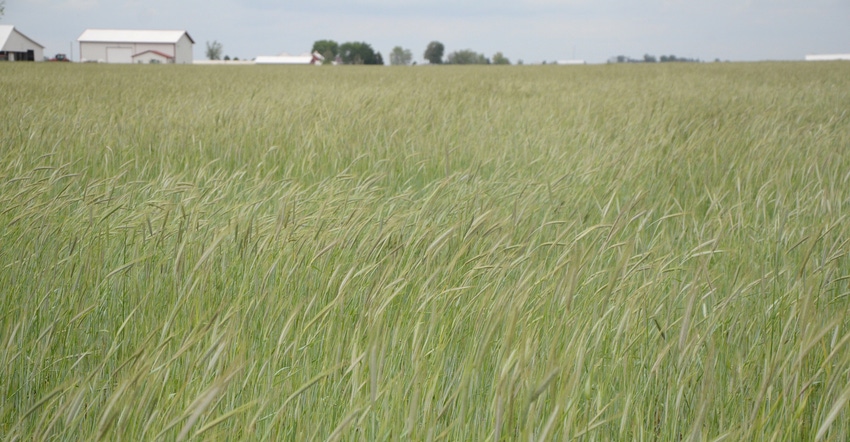July 13, 2021

The practice of adding small grains or forage crops to corn and soybean rotations has great potential to balance production and environmental goals, but adoption of these practices in Iowa and across the Midwest is low.
A recent research article published in the Journal of Agricultural and Environmental Letters by members of Iowa State University's departments of sociology and agronomy examined farmer perspectives on the potential benefits and barriers related to extended rotations.
"Before the widespread use of internal combustion engine tractors and synthetic fertilizers and pesticides, extended rotations were key to soil fertility and pest control," says J. Gordon Arbuckle, a professor of rural sociology and Extension sociologist at ISU. "While the shift to a fossil-fuel-based system of cultivation, fertility and pest control reduced labor needs, over time it has also resulted in unintended consequences such as contaminated water bodies, pesticide resistance, greenhouse gas emissions and degraded soils. Use of extended rotations could help to reverse some of those harms."
Farmer perspectives
The survey was conducted because little is known about farmers' perspectives on extended rotations.
"My master's thesis research in agronomy at ISU explored farmers' views on the benefits of and barriers to use of extended rotations," explains lead author David Weisberger, now a Ph.D. student in weed science at the University of Georgia. "I conducted interviews and focus groups with Iowa farmers who were using small grains in extended rotations. Insights from those interactions informed the design of survey questions for the statewide Farm Poll."
The use of extended rotations, especially those that incorporate small grains and forages, can have major positive agronomic and environmental impacts.
"On the agronomic side, they lead to increased soil organic matter, healthier microbial communities, greater water-holding capacity, and promote other indicators of soil health — and ultimately, crop yields — while also reducing weed, pest and disease prevalence," says co-author Marshal McDaniel, an ISU assistant professor of agronomy. "The environmental benefits are also important; for example, extended rotations can improve water quality by reducing nutrient loss to waterways."
Barriers to use
The results of the survey showed that farmers are well aware of the many potential benefits of extended rotations, but they see major barriers to widespread use.
"Almost all farmers surveyed understand that extended rotations can improve soil health while reducing the need for inputs such as fertilizers and pesticides," notes co-author Matt Liebman, an ISU professor of agronomy. "That said, they also recognize that there are major barriers to their use, such as lack of markets, lagging research on small grains and forages breeding, and a shortage of technical know-how among agricultural retailers and other crop advisers."
The authors explained that barriers such as lack of markets and small grain handling infrastructure are considered to be structural barriers that cannot be easily addressed by individual farmers.
"Some of the big challenges that we face in agriculture — soil and water degradation and pesticide resistance, for example — can be addressed through resilience-enhancing extended rotations," Arbuckle says. "However, efforts to promote extended rotations with small grains and forages will likely require supportive changes in agri-food policies, programs and, ultimately, markets."
Click to read the ISU article published in the Journal of Agricultural and Environmental Letters.
For more information, Arbuckle can be reached at 515-294-1497 or [email protected].
Source: Iowa State University Extension and Outreach, which is responsible for the information provided and is wholly owned by the source. Informa Business Media and its subsidiaries aren't responsible for any of the content contained in this information asset.
You May Also Like




